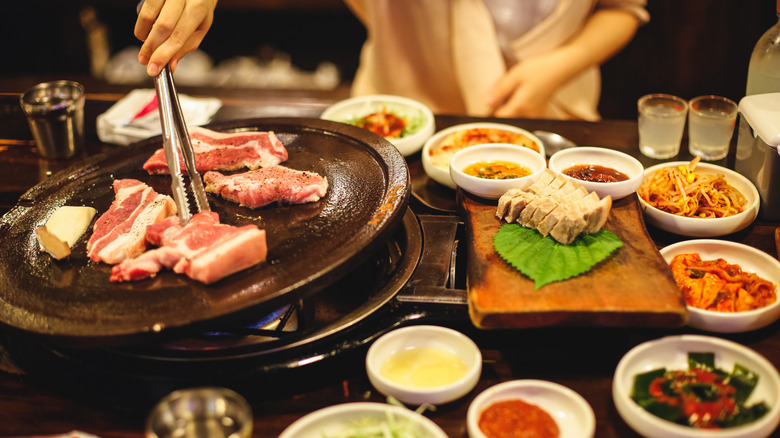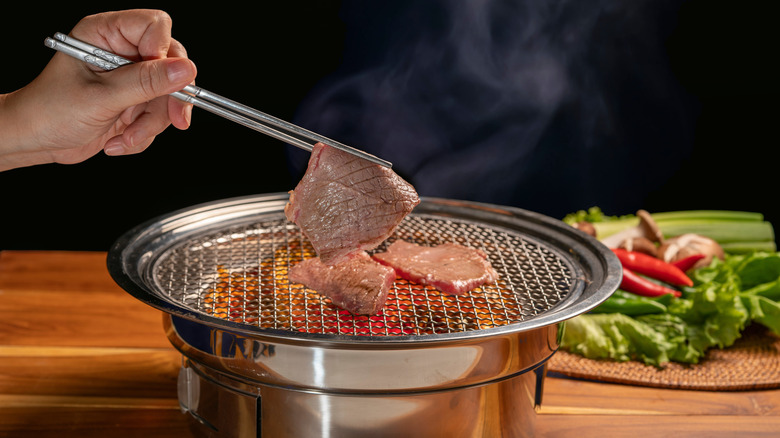What Makes Korean Barbecue Unique?
When most people think of a barbecue, they might imagine an outdoor scene with a smoky grill and an assortment of foods on a picnic table. Although the idea is similar, a much smaller, tabletop grill featuring thinly sliced meats with sweet and savory marinades is at the heart of Korean barbecue. Add in a variety of side dishes offering plenty of flavors and an assortment of textures, as well as a communal environment that isn't complete without family and friends.
As in many other culinary barbecue traditions, meat is the star of Korean barbecue. It could be beef short ribs (galbi) or bulgogi (thinly sliced ribeye, brisket, or sirloin) marinated in a soy based marinade, a gojuchang spiced pork (dwaji bulgogi), or a fiery chicken (buldak). For the meat, we recommend this meat slicing hack that gets thin results.
The array of meats is served with ssamjang (a combination of soybean and chili pastes with sesame seeds and sesame oil). This sauce goes on lettuce or some similar green leaves before diners add the meat on top. Finally, many also use green onions, slices of garlic, or thinly sliced green Korean chilies to garnish the tasty wrap.
Origins of Korean barbeque
The side dishes (known as banchan) that can be served up alongside the protein in Korean barbecue may include a variety of fermented veggies, stir-fried dried anchovies, marinated greens, and even rolled omelets. Rice is often served as the favorite carb. And don't forget some form of alcohol, be it beer, wine, soju (which is made from a rice-based mixture), or the sparkling rice wine known as makgeolli.
According to some stories, Korean barbeque started with a group of nomads known as the Maek from central Asia. They had a relatively new (at least, for the late 6th century) approach to cooking that involved seasoning meats to help preserve them and save food prep time while traveling. Once the tribe settled in a new spot, the food was prepared over an open fire. Eventually, this style of cooking made its way to Korea and became popular in the medieval period.
The addition of the side dishes purportedly came courtesy of the Buddhist monks, who did not typically eat meat. After the Mongols took over Korea in the 13th century, meat became fashionable again. The grilled meats were served with the side dishes, and the concept of a communal grill and dining began to take shape.

